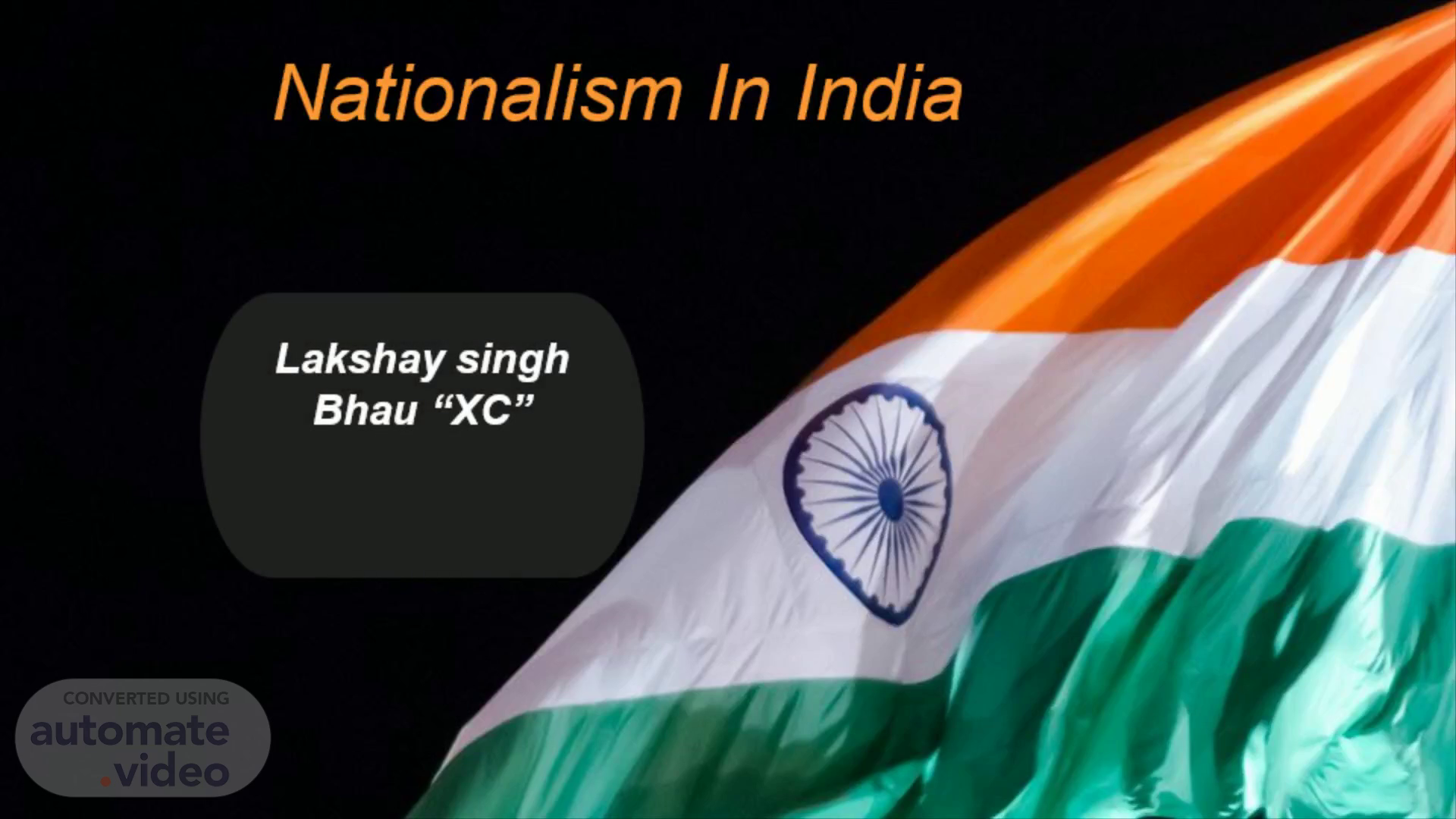
Nationalism In India
Scene 1 (0s)
Nationalism In India. Lakshay singh Bhau “XC”.
Scene 2 (7s)
abstract. If u help us in the war !! We will leave India..
Scene 3 (26s)
AW\XNCES CENTRAL powas muues. THE GREAT WAR (1914-1918).
Scene 4 (40s)
abstract. Sores tk. • , India. Villagers were called upon to supply soldiers, and the forced recruitment in rural areas caused widespread anger..
Scene 5 (57s)
. We are going low on revenue. What should we do?.
Scene 6 (1m 17s)
Africa is free. Its time for Indians to be free..
Scene 7 (1m 28s)
The meaning of satyagraha is an increasing awareness of dharma or truth and this awareness first came to me in 1887. In that year, my caste of Modh Baniyas threatened to excommunicate me if he went to England for, according to our custom, travelling overseas meant losing one’s caste. My reaction was that they were welcome to do so, but I would certainly go to England. “My satyagraha was born on that day,” . Thus, my first satyagraha was directed against the elders of my caste whom I respected as much as my father. The satyagraha with the government was only a part of this satyagraha..
Scene 8 (2m 6s)
. Now i will see how they will organize movements against us..
Scene 9 (2m 41s)
94K. Seconds later...came General Dyer s infamous order. Dyer's troops started fringe Dozens were killed within seconds..
Scene 10 (2m 55s)
A large peaceful crowd had gathered at the Jallianwala Bagh in Amritsar , Punjab to protest against the arrest of pro-Indian independence leaders Dr. Saifuddin Kitchlew and Dr. Satya Pal. In response to the public gathering, the British Brigadier-General R. E. H. Dyer surrounded the Bagh with his soldiers. The Jallianwala Bagh could only be exited on one side, as its other three sides were enclosed by buildings. After blocking the exit with his troops, he ordered them to shoot at the crowd, continuing to fire even as the protestors tried to flee. The troops kept on firing until their ammunition was exhausted. Estimates of those killed vary between 379 and 1500+ people and over 1,200 other people were injured of whom 192 were seriously injured. Many people even jumped in the well to save themselves..
Scene 11 (3m 38s)
abstract. abstract. Britshers are ruling us only cause we are co-operating with them. So from today we won’t. Burn their goods, and use indian. “Videshi Chodo, Desi Apnao”.
Scene 12 (3m 59s)
Dandi March. The Salt March , also known as the Salt Satyagraha , Dandi March and the Dandi Satyagraha , was an act of nonviolent civil disobedience in colonial India led by Mahatma Gandhi . The twenty-four day march lasted from 12 March 1930 to 6 April 1930 as a direct action campaign of tax resistance and nonviolent protest against the British salt monopoly . Another reason for this march was that the Civil Disobedience Movement needed a strong inauguration that would inspire more people to follow Gandhi's example. Gandhi started this march with 78 of his trusted volunteers.The march spanned 239 miles (385 km), from Sabarmati Ashram to Dandi , which was called Navsari at that time (now in the state of Gujarat). Growing numbers of Indians joined them along the way. When Gandhi broke the British Raj salt laws at 8:30 am on 6 April 1930, it sparked large scale acts of civil disobedience against the salt laws by millions of Indians..
Scene 13 (4m 48s)
The partition of India split British India into the countries of India and Pakistan (East and West Pakistan) in 1947. This partition was part of the end of British rule over the Indian subcontinent, called British Raj. … Pakistan became a Muslim country, and India became a majority Hindu but secular country..
Scene 14 (5m 5s)
~ Lakshay Singh Bhau XC.